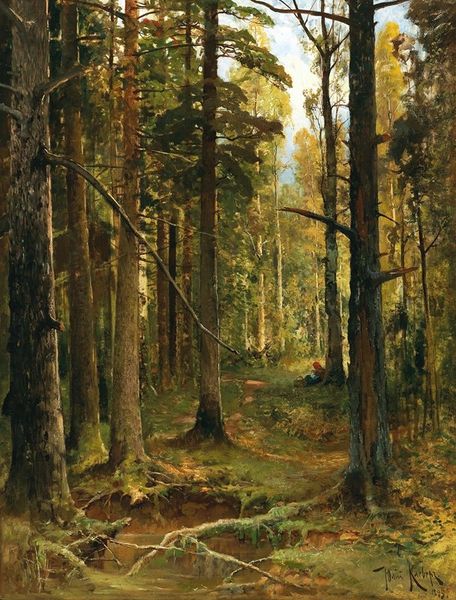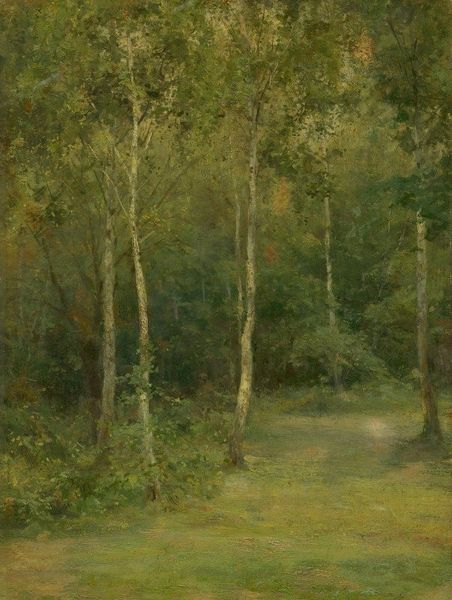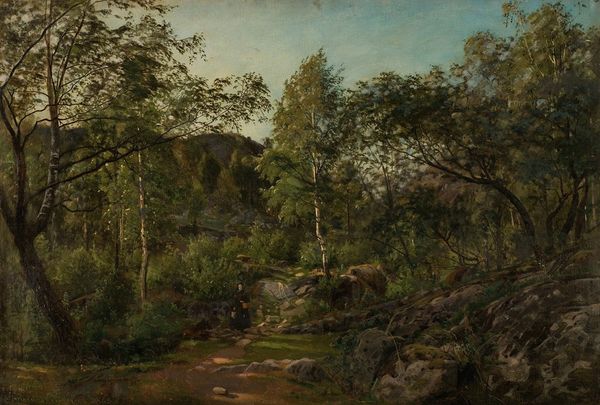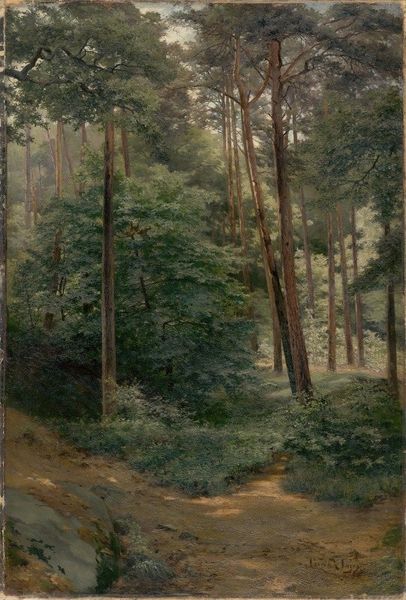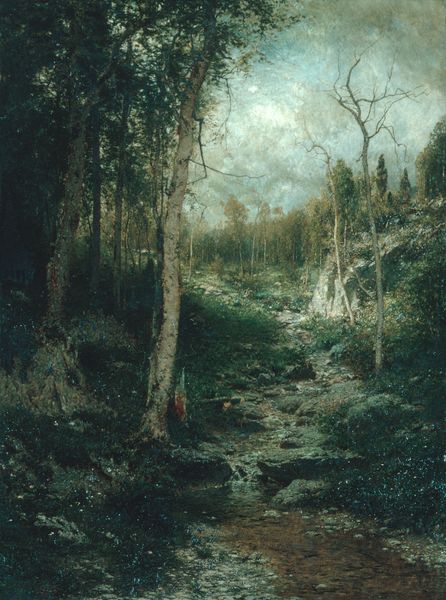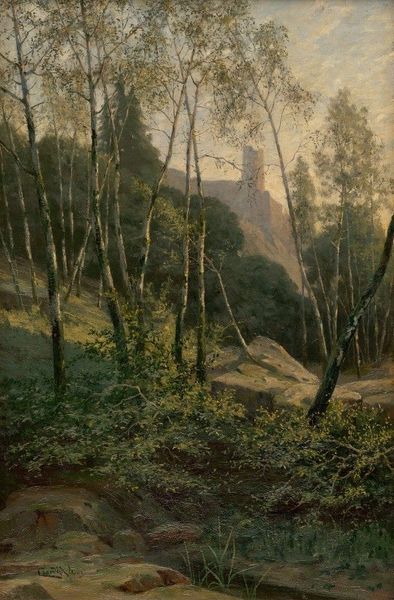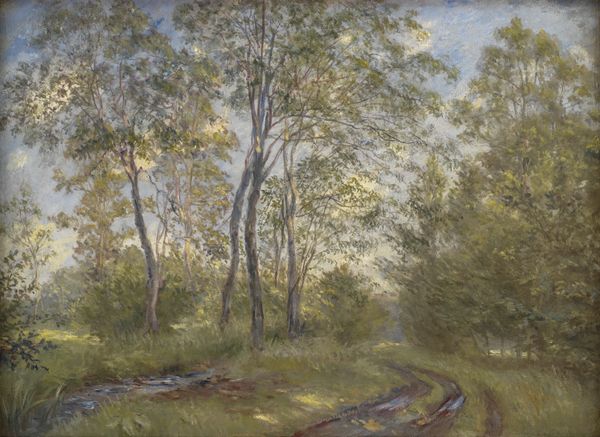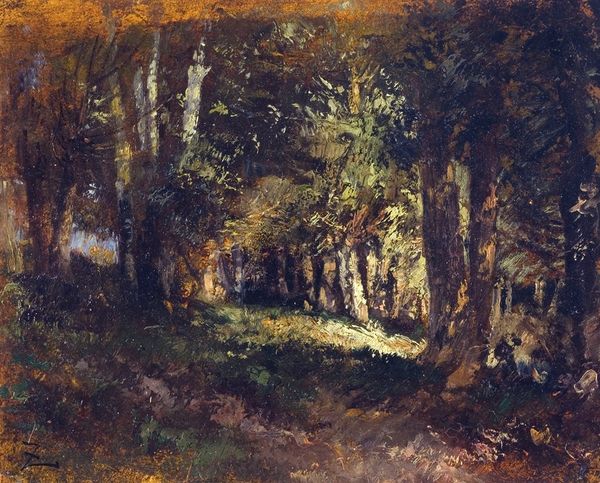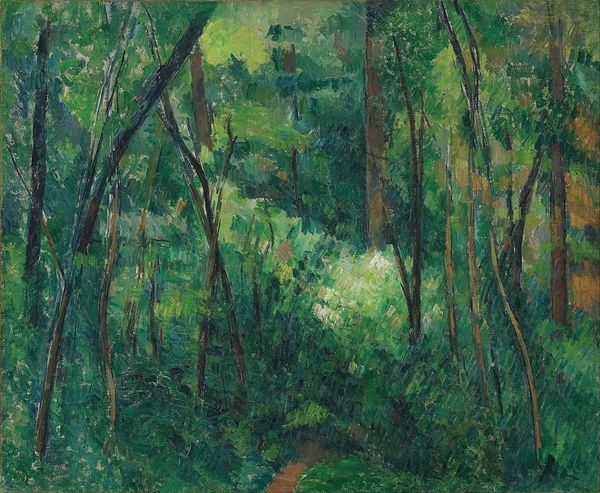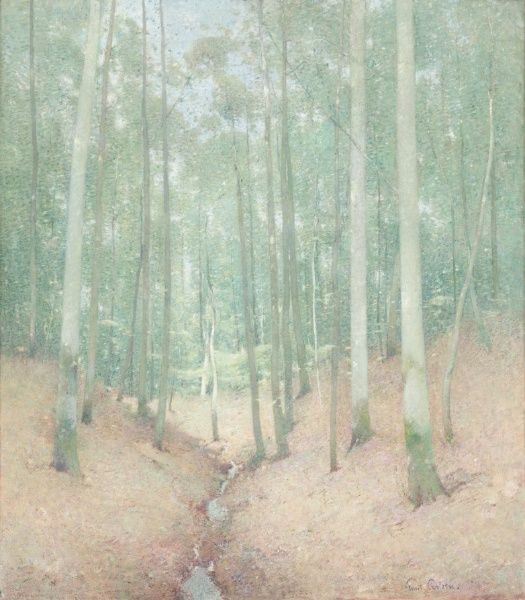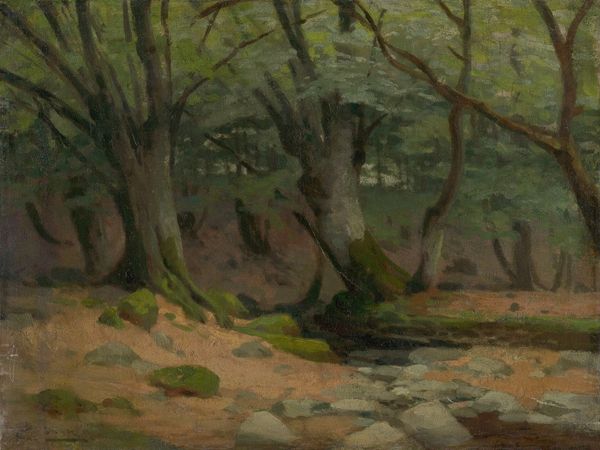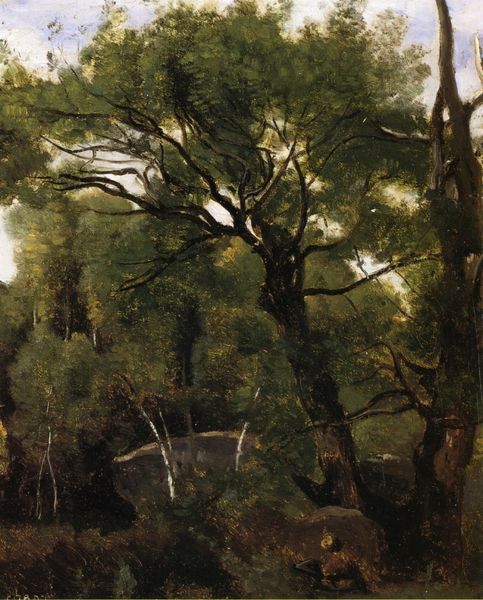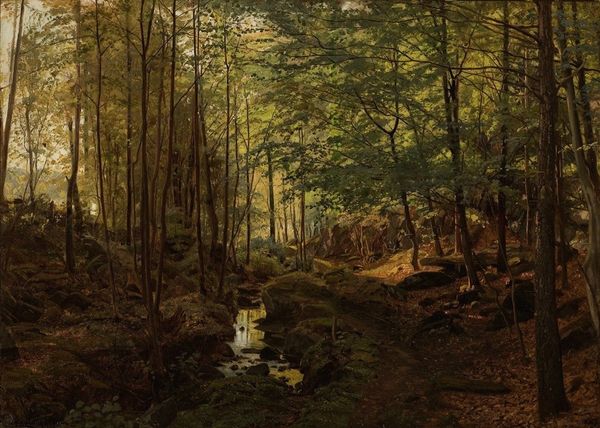
Copyright: Public Domain: Artvee
Editor: This is Gustave Courbet's "Path Through the Forest," an oil painting from around 1860. I’m immediately struck by how dark it is, but also inviting, like a hidden world. What symbols do you see at play in this kind of forested path? Curator: A forest path is laden with symbolism. Culturally, it's a space of transition, initiation, even danger, reflecting ancient myths. Think of Little Red Riding Hood or Dante's "Divine Comedy"—forests represent a journey into the unknown. Editor: So, the path isn’t just a road. It's a symbol of a life journey? Curator: Exactly. And look at how Courbet renders the light – or lack thereof. Notice how it beckons and obscures simultaneously. Do you think the lack of specific detail adds to this sense of ambiguity? Editor: Definitely. I notice I keep looking for what's at the end of the path, or hidden amongst the trees, as if the forest holds a secret. Curator: It’s a threshold, hinting at what could be found—wisdom, perhaps, or even a confrontation with our own inner selves. The density, painted with such raw realism, invites a kind of introspection. It reminds me that even in the deepest darkness, there is always a path forward, even if unseen. Editor: I never thought of landscape as being so psychologically charged. I see the painting completely differently now, realizing the density of cultural meaning imbued in what I previously took at face value. Curator: Visual language like this shows us how cultural memory works and why continuity persists; the symbols resonate even across time, shifting shape but never truly fading.
Comments
No comments
Be the first to comment and join the conversation on the ultimate creative platform.
